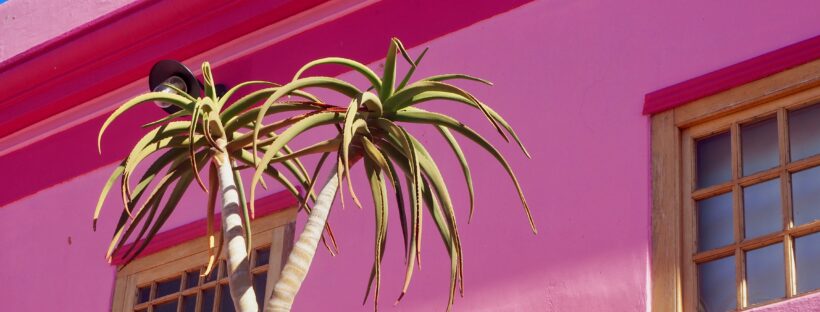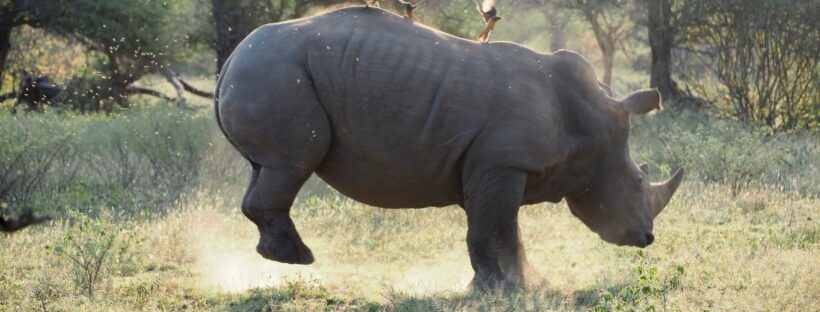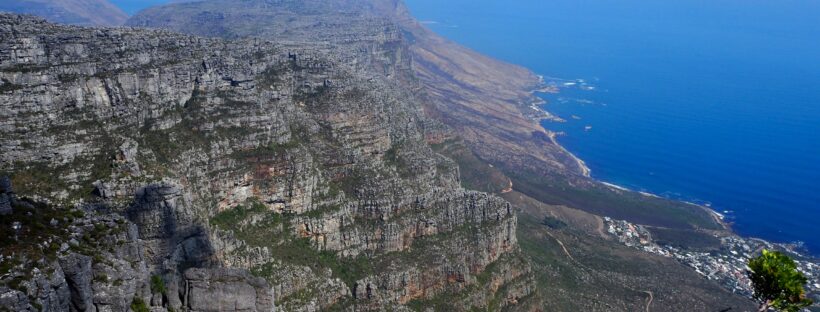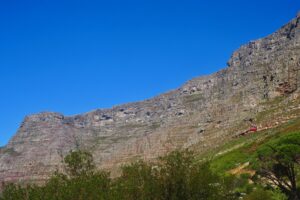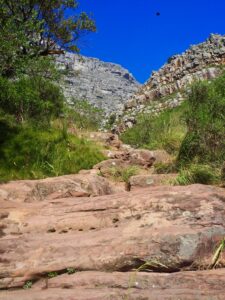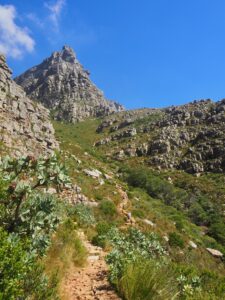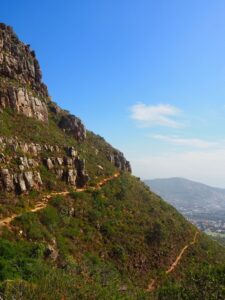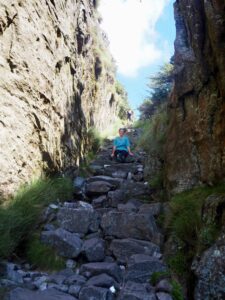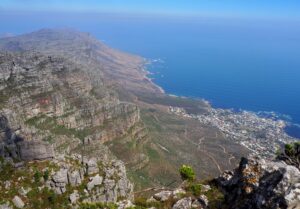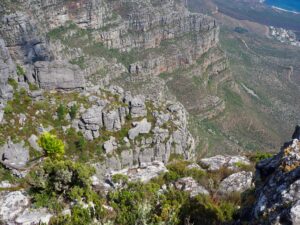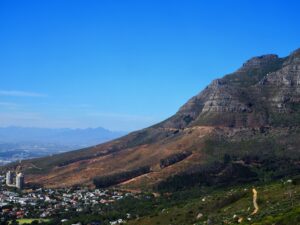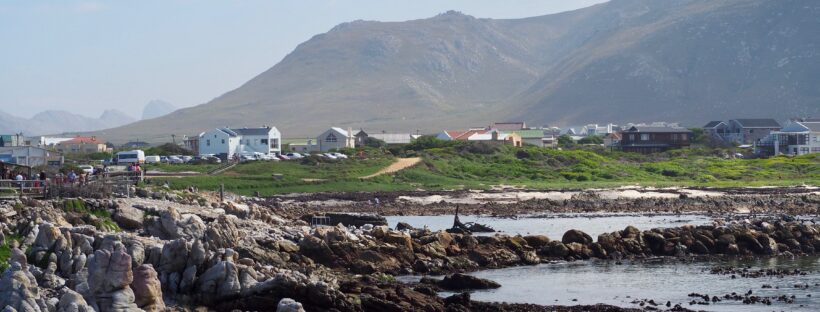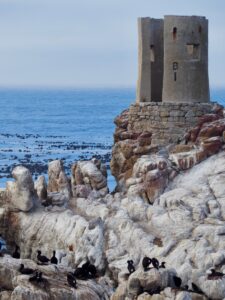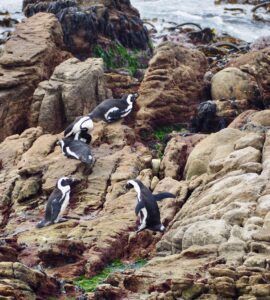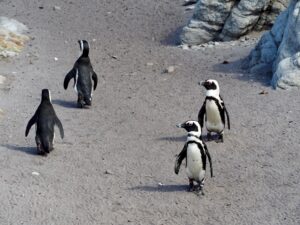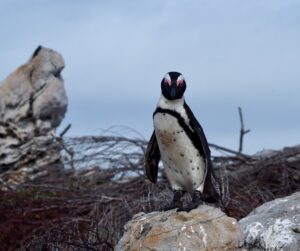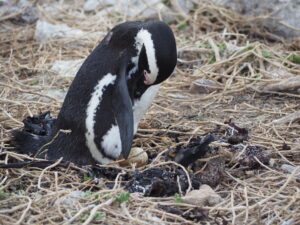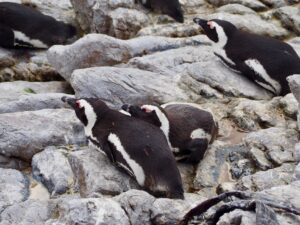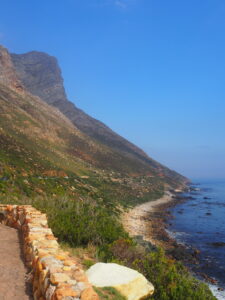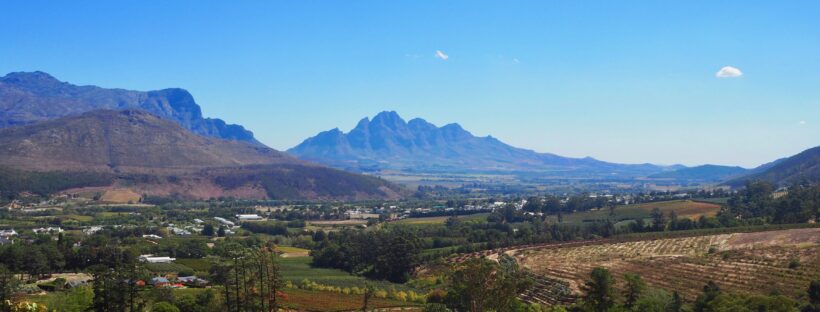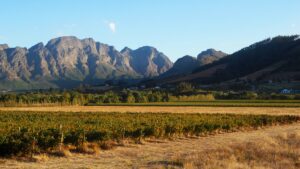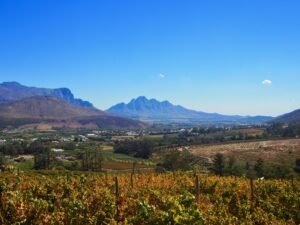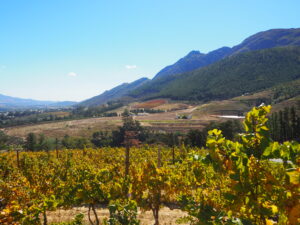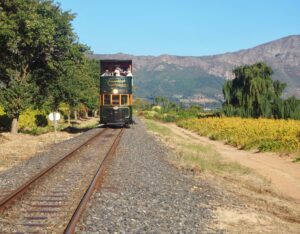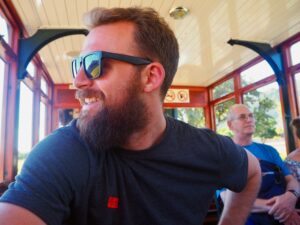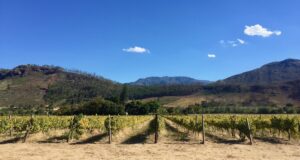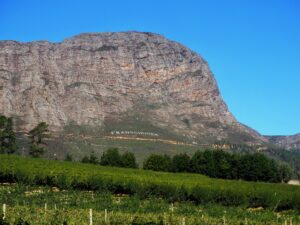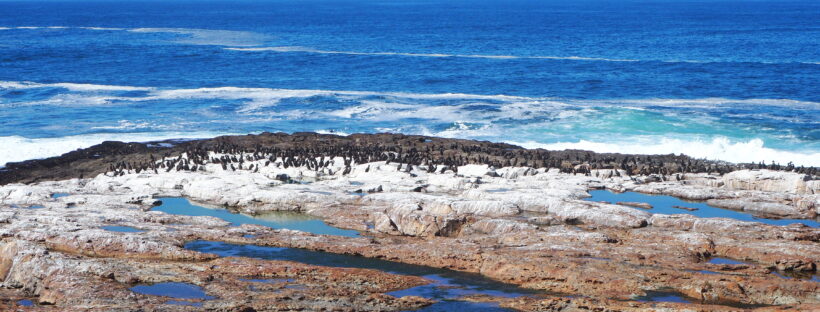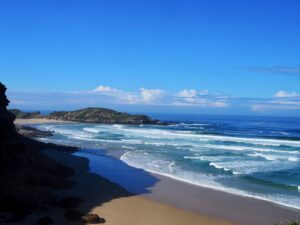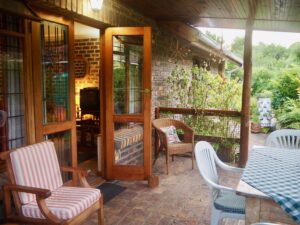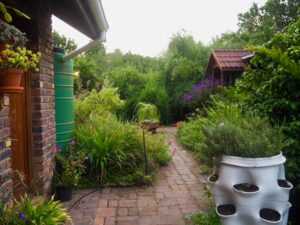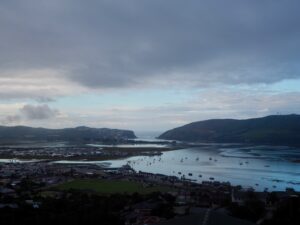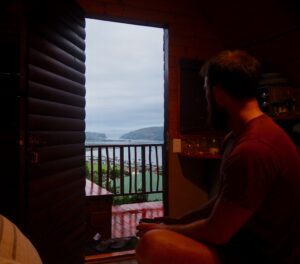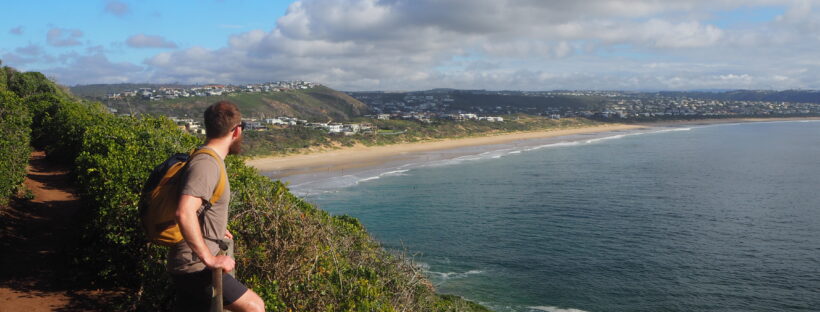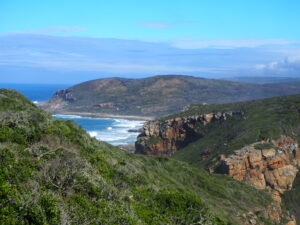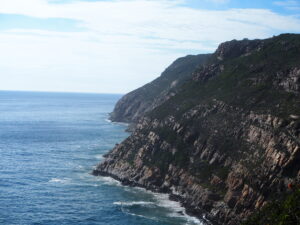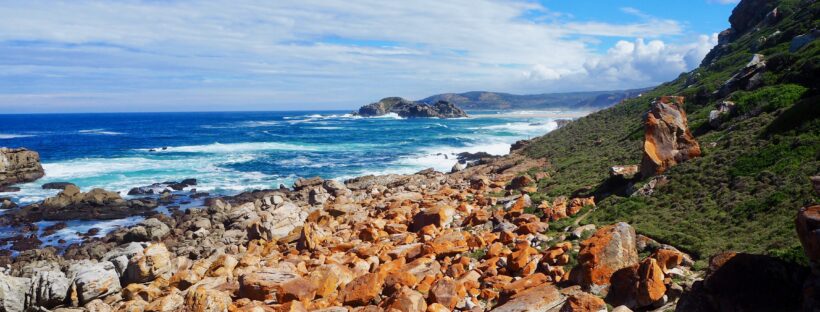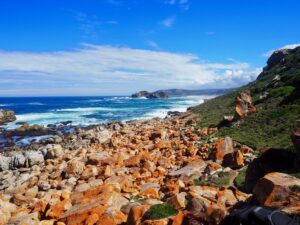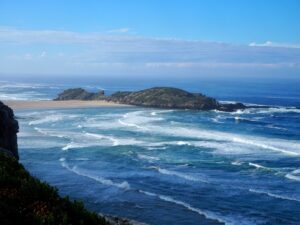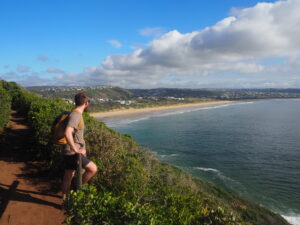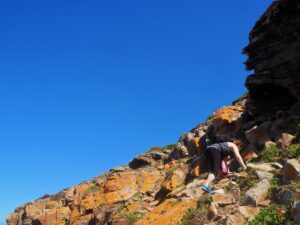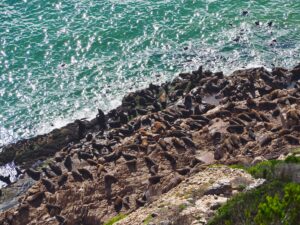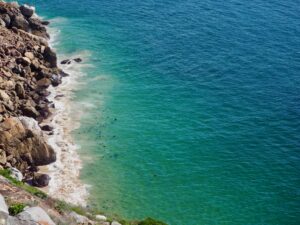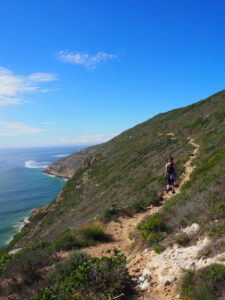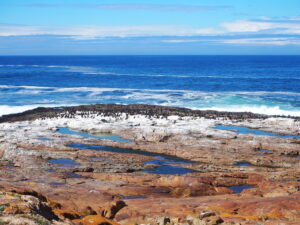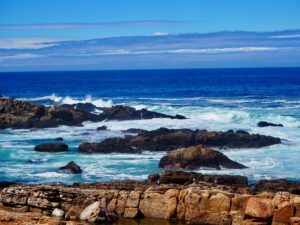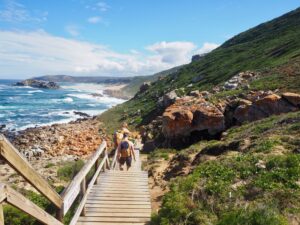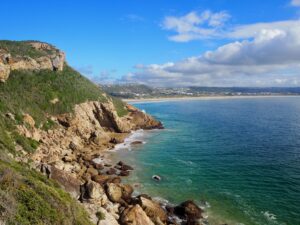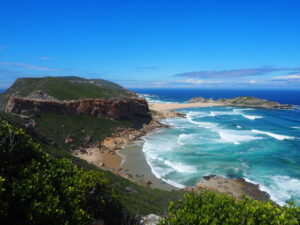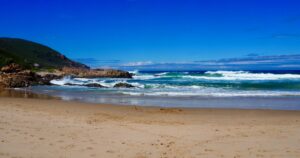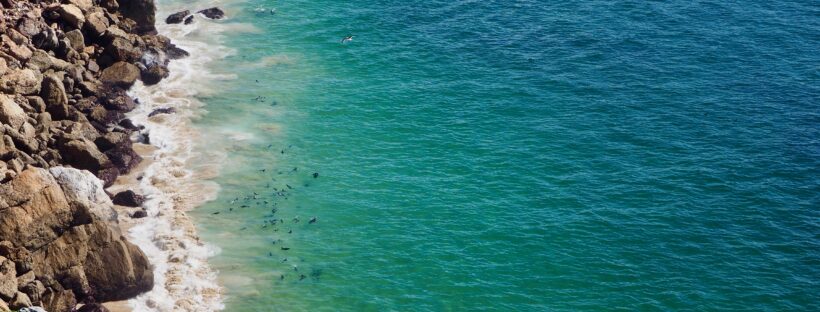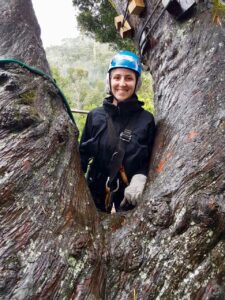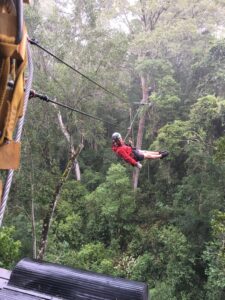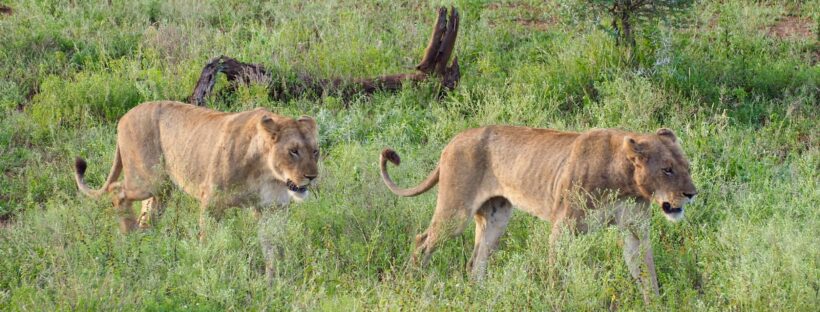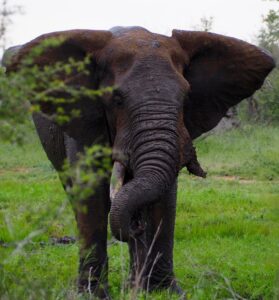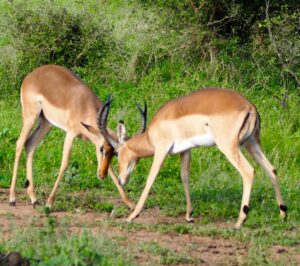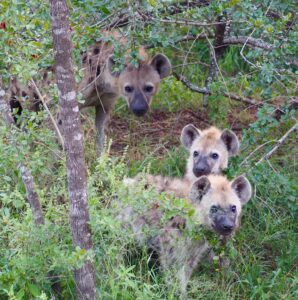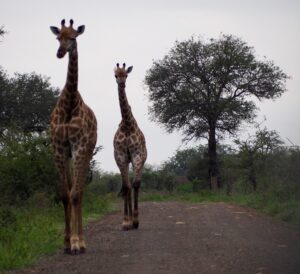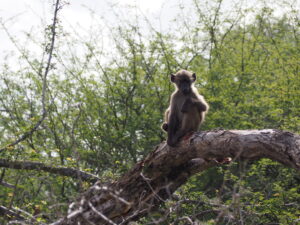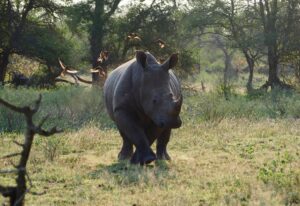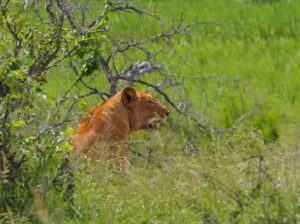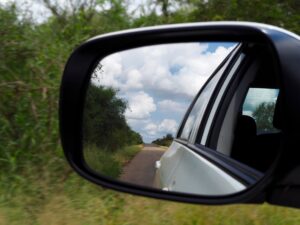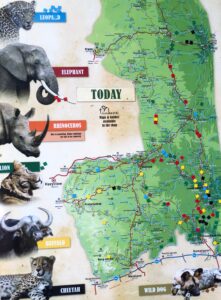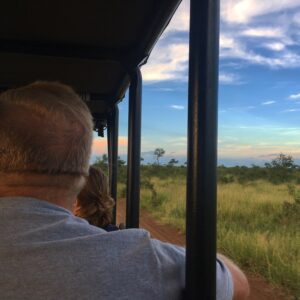And then WE WERE THERE! It felt like we’d been on our way for weeks, and suddenly Table Mountain appeared before our eyes (on fire from an arsonist no less). We’d made it!
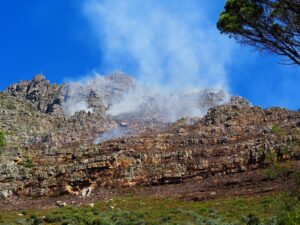
I didn’t know what to expect from Cape Town, other than to love it. And love it I did. I could have spent weeks getting to know that city, and I firmly hope to return one day to do just that. We stayed in Salt River which is up and coming and maybe a bit more dangerous than we had anticipated (per our Uber drivers, actually staying there felt quite safe).
By this point of the trip we were ready to relax, so our days were a lot less packed than those leading up to it. If you’re looking for a chilled out itinerary that still fits in the major things, look no further!
FOUR DAY CAPE TOWN ITINERARY
DAY ONE
After hanging with the penguins, returning our rental, and settling into our Airbnb, most of the day was gone. We wanted to get out and do something fun with our afternoon, and a great place to get acclimated is at the Victoria & Albert Waterfront. There are loads of restaurants, many with views, and it’s quite a touristy part of the city. It’s fun for an afternoon, and a great place to watch the sunset, but I wouldn’t recommend more than a few hours there. It’s a bit like a giant outdoor mall. We had dinner on the roof deck of Harbour House which was delicious, and had great outdoor seating. (There’s also a bookstore at the Waterfront with really cheap Travel Catan, if you’re into that!). This is a great first stop, first to get it out of the way but second to ease into the city if you’ve just arrived.
DAY TWO
The next morning grab some breakfast at Food Lover’s Market before meeting up with the free walking tour which starts just around the corner at Motherland Coffee. They have a few tours–we did the Historic one which we loved, though I’m sure they’d all be great. You’ll get some history and great insight into the city, and see most of the major sights! Prior to this trip I wasn’t big on tours, but I’m beginning to change my mind. This ends in Company’s Garden, where G and I sat at the café and had lunch, read a bit, and played some cards. It was lovely.
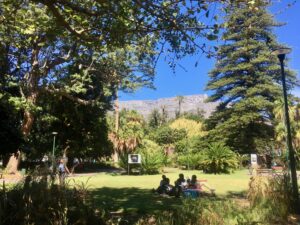
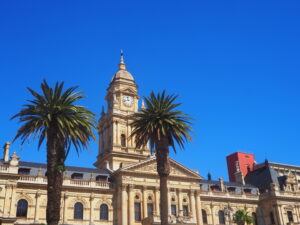
After the tour, make your way back to Greenmarket Square and explore the market. We went on a bit of a buying frenzy getting gifts for friends (and ourselves). We needed another bag, as we had somehow collected way more than we could fit in our two backpacks for the journey home. We ended up getting an incredible elephant painting, a cute little backpack, a few bowls, salad spoons, magnets, and a big canvas print – and we got to barter, which I am a pro at (thanks to Katie and our time in Guatemala) and Gareth is honestly TERRIBLE at. Even so, we got some pretty good deals.
From there head to your accommodation to drop off your loot, before catching an uber to Reverie Social Table, a highly recommended dinner place. It only seats about 16 people each night, and it’s a social experience as much as a culinary one.
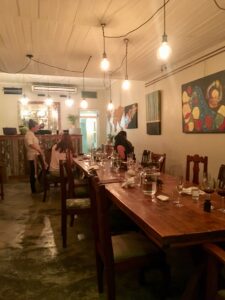
Get to know the other guests, have far too much (delicious) wine, and eat some of the best food in Cape Town. I definitely recommend this place and its adorable chef, Julia Hattingh.
DAY THREE
Wake up early, grab breakfast, and head straight to Table Mountain. Be ready to hike, and though harder than (I) expected, it is so worth it! If you’re able, I highly recommend skipping the cable car and hiking up yourself – it’s such an incredible feeling.
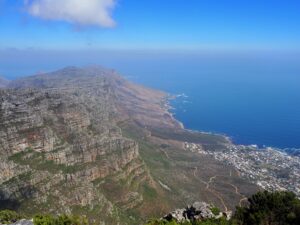
Once finished, jump in a cab to Bo Kaap, which is close by and just as incredible in person as it is in pictures. There’s so much to see, and some cute shops (I got an adorable terrarium from Angels+Earth).
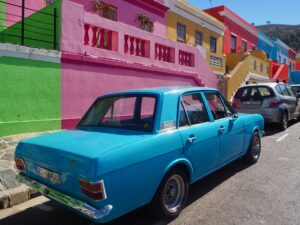
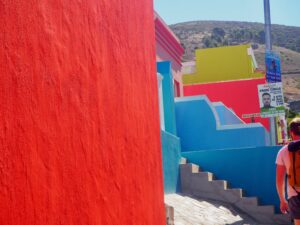
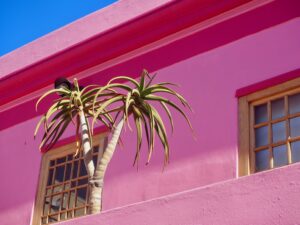
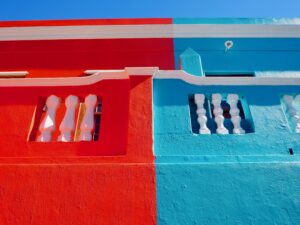
The same walking tour group offers tours of Bo Kaap, and while we didn’t have time to do it, I bet it would be great!
Just a few minutes’ walk from Bo Kaap is Bree Street, which has some of the best food in Cape Town. The hardest part is deciding where to go. We chose to have tapas at La Parada which was SO good, especially the Pork Belly and Cauliflower Puree, but I’ve also heard great things about Bocca and Villa 47. If you’re into nightlife and big on food, I’d stay around Bree street so you can try a different place each night. After a few Spanish wines, mosey down the street to Sky Bar which has a rooftop bar with incredible views of Table Mountain. It’s the perfect way to end the day, sipping on a mojito, watch the sun set around the iconic mountain you’ve just climbed.
DAY FOUR
Be better than us and plan ahead, so you can spend the morning actually visiting Robben Island instead of trying unsuccessfully to get last minute tickets. We tried craigslist, calling hotels, and going in person in case there were any no shows, with no luck. Because you’ll already have tickets, spend the day taking a tour of the island.
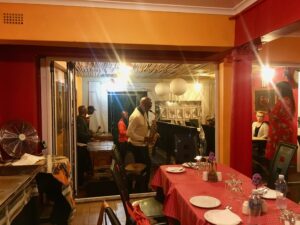
You’ll notice there aren’t any Township Tours on this itinerary. Gareth was pretty against them, as he sees it as paying money to look at poor people. I know there’s a lot more to the tours than that – history, education, development, etc, but I really agree with his hesitation and that it wasn’t the right way to get involved. Instead we decided to go into Langa Township to Mzansi Restaurant, which was a great way to see and support the Township without being as voyeuristic.
TIPS
- Book Robben Island tickets at least a week in advance. It was unfortunately sold out by the time we arrived in Cape Town, and we were so disappointed to miss it.
- It’s not necessary to rent a car, Uber is a great way to chat to some locals (though most of ours weren’t actually from South Africa) and is super cheap!
- Get a sim card at the airport to make getting around South Africa incredibly easy from the first moment.
